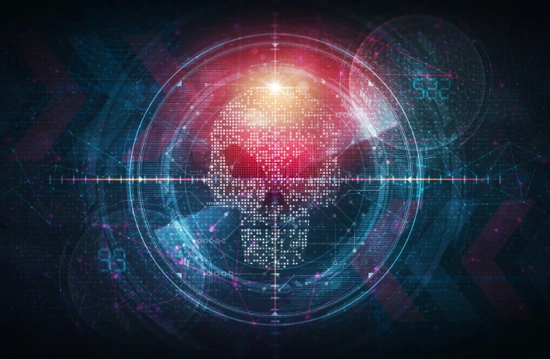Cyber Threat Intelligence (CTI) is the process of gathering, analyzing, and utilizing information about potential cyber threats that could impact an organization’s security. By leveraging data from a variety of sources—such as threat actors, attack patterns, vulnerabilities, and Indicators of Compromise (IOCs)—CTI helps organizations anticipate, prevent, and respond to cyberattacks more effectively. CTI enables security teams to make informed, strategic decisions, detect threats earlier, and build stronger defenses against evolving cyber risks. Understanding how CTI operates is key to staying ahead in today’s dynamic threat landscape.
Cyber Threat Intelligence (CTI) plays a vital role in strengthening an organization’s overall security posture. By providing actionable insights into potential threats, CTI equips security teams with the knowledge needed to detect, prevent, and mitigate cyberattacks. Here’s a closer look at the key benefits CTI offers to organizations:
- Proactive Threat Detection and ResponseCTI enables organizations to identify and respond to cyber threats before they escalate. By analyzing threat patterns, malicious actors, and indicators of compromise (IOCs),CTI helps security teams spot suspicious activities at an early stage. This proactive approach not only minimizes potential damage but also reduces the time it takes to respond to emerging threats. As a result, CTI significantly improves an organization’s resilience against sophisticated cyberattacks.
- Informed Decision-MakingWith CTI, security teams gain a comprehensive understanding of the current threat landscape. This information includes attack vectors, vulnerabilities, and threat actors' motives, enabling organizations to make informed decisions about their security strategies. By prioritizing risks based on accurate intelligence, organizations can allocate resources more effectively, ensuring that the most critical threats are addressed first.
- Enhanced Incident ResponseIncident response teams benefit from CTI by having access to detailed, real-time data on ongoing or potential attacks. This information helps teams quickly identify the scope, origin, and tactics of an attack, leading to faster containment and recovery. CTI provides context that helps analysts understand whether an incident is part of a broader campaign, which in turn influences how resources and response measures are deployed.
- Better Vulnerability ManagementCTI supports vulnerability management by highlighting which vulnerabilities are most likely to be exploited by attackers. This information helps security teams focus their efforts on patching the highest-risk vulnerabilities first. Instead of attempting to address all vulnerabilities equally, organizations can adopt a risk-based approach, reducing the likelihood of successful exploits and improving overall security.
- Improved Security Awareness and TrainingBy analyzing real-world threat data, CTI offers valuable insights that can be used to enhance security awareness programs. Organizations can use this intelligence to educate employees about the latest phishing tactics, malware campaigns, and other cyber threats. Training based on current threat intelligence equips employees to recognize and avoid potential attacks, thereby reducing human error—a common entry point for cyberattacks.
- Strengthened Defense Against Advanced ThreatsCybercriminals continuously evolve their tactics, techniques, and procedures (TTPs) to bypass traditional security measures. CTI helps organizations stay ahead of these advanced threats by providing insights into emerging techniques used by attackers. With this intelligence, security teams can adjust their defenses, deploy new countermeasures, and adapt security protocols to address new risks as they arise.
- Reduced False Positives and AlertsOne of the major challenges faced by security teams is dealing with an overwhelming number of false positives. CTI helps improve the accuracy of threat detection tools by providing context that refines and validates alerts. By correlating information from various sources, CTI enables security solutions to reduce false positives, allowing analysts to focus on genuine threats and avoid alert fatigue.
- Support for Compliance and Regulatory RequirementsCTI helps organizations meet compliance and regulatory requirements more efficiently. Many regulations, such as the General Data Protection Regulation (GDPR) or the Health Insurance Portability and Accountability Act (HIPAA),require organizations to have security measures that are capable of detecting, preventing, and responding to threats. CTI helps fulfill these requirements by enhancing monitoring capabilities, improving incident response times, and demonstrating proactive risk management during audits.
- Increased ROI on Security InvestmentsBy offering insights that improve threat detection and response, CTI enhances the effectiveness of an organization’s security investments. With better intelligence, security tools such as firewalls, SIEMs (Security Information and Event Management),and endpoint protection solutions can operate more effectively. This increased efficiency means organizations get more value from their existing security infrastructure while reducing the likelihood of costly breaches.
- Strategic Insights for Long-Term Security PlanningCTI doesn’t just offer immediate benefits; it also provides strategic insights that inform long-term security planning. By analyzing historical and emerging trends, CTI helps organizations develop security strategies that address future risks. This forward-thinking approach enables organizations to build a robust security framework that can adapt to evolving threats and changing business needs.
- Collaboration and Information SharingCTI encourages collaboration within the cybersecurity community by enabling organizations to share threat data with peers, industry groups, and government entities. By participating in information-sharing initiatives, organizations contribute to a collective defense effort, improving the overall security posture across industries. Additionally, CTI-driven collaboration helps organizations understand the broader threat landscape and implement best practices.
- Enhanced Brand Reputation and Customer TrustEffective CTI helps organizations prevent breaches that could harm their reputation. Demonstrating a proactive approach to cybersecurity builds trust with customers, partners, and stakeholders. By showcasing a commitment to protecting sensitive data and critical systems, organizations can enhance their brand image and maintain customer loyalty in an era where cybersecurity is a top priority.
Cyber Threat Intelligence (CTI) is categorized into four main types, each serving a distinct purpose in enhancing an organization’s security posture. These types—Strategic, Tactical, Operational, and Technical—offer different levels of detail and insights, supporting everything from broad security strategy to immediate threat response. Here’s a detailed look at each type:
Strategic Cyber Threat Intelligence
Strategic CTI is high-level intelligence focused on long-term trends and the broader threat landscape. It helps decision-makers understand the context of cyber threats, offering insights that influence policy, investment, and security planning. This intelligence typically analyzes global cybersecurity trends, geopolitical factors, and emerging technologies to help organizations anticipate potential threats and prepare accordingly.
Key Characteristics of Strategic CTI:
- Audience: Executives, CISOs, risk management teams, and board members.
- Purpose: To guide long-term security strategies, risk management, and resource allocation.
- Insights Provided: Information about threat actors’ motives, emerging attack trends, and possible vulnerabilities related to economic, political, or social factors.
- Sources: Industry reports, government advisories, global threat intelligence feeds, and analysis from cybersecurity thought leaders.
Strategic CTI helps organizations decide where to invest resources, which security measures to prioritize, and how to adjust policies to mitigate evolving risks. It also plays a crucial role in improving an organization's overall resilience by aligning security efforts with business objectives and compliance requirements.
Tactical Cyber Threat Intelligence
Tactical CTI provides intelligence on the tools, tactics, and procedures (TTPs) used by attackers. It is designed to help security teams understand the specifics of how attackers plan and execute their attacks. Tactical intelligence focuses on translating attacker behaviors into actionable insights that can be used to improve defenses, conduct threat-hunting activities, and develop use cases for security information and event management (SIEM) systems.
Key Characteristics of Tactical CTI:
- Audience: Security analysts, threat hunters, and incident response teams.
- Purpose: To enhance detection capabilities and refine security controls based on current attack methods.
- Insights Provided: Data on phishing tactics, malware distribution techniques, exploitation methods, and attacker capabilities.
- Sources: Malware analysis reports, penetration testing results, dark web monitoring, and information from security vendors.
Tactical CTI is instrumental in equipping security teams with the necessary context to identify and respond to threats effectively. It helps refine detection rules, adjust security configurations, and develop new threat-hunting techniques to stay ahead of attackers.
Operational Cyber Threat Intelligence
Operational CTI is focused on the specifics of impending attacks, such as who is attacking, what methods they are using, and when an attack is likely to occur. It provides real-time intelligence that informs immediate threat response efforts, helping organizations understand the scope, impact, and urgency of potential or ongoing attacks.
Key Characteristics of Operational CTI:
- Audience: Incident response teams, security operations centers (SOCs),and threat hunters.
- Purpose: To facilitate quick, informed decision-making during an attack.
- Insights Provided: Detailed information about active threats, targeted industries, infrastructure details, and attack vectors.
- Sources: Threat actor communications, dark web chatter, security alerts, and incident data from external partners.
Operational CTI enables organizations to anticipate attacks, prepare incident response plans, and mitigate damage. It helps identify threat actors’ goals, timelines, and potential targets, allowing security teams to respond rapidly and effectively.
Technical Cyber Threat Intelligence
Technical CTI is highly granular intelligence that includes specific technical data about Indicators of Compromise (IOCs),such as IP addresses, URLs, file hashes, and domain names associated with known threats. It provides the foundational details needed for automated detection systems and serves as a crucial component in identifying and blocking threats across an organization’s digital infrastructure.
Key Characteristics of Technical CTI:
- Audience: SOC analysts, IT administrators, and security engineers.
- Purpose: To provide data that can be directly integrated into security tools for automated detection and response.
- Insights Provided: IOCs, network signatures, malware analysis, and command-and-control (C2) server details.
- Sources: Threat intelligence platforms, honeypots, malware analysis sandboxes, and open-source intelligence (OSINT).
Technical CTI is essential for fine-tuning security controls and automating detection. It feeds into security devices like intrusion detection systems (IDS),firewalls, and endpoint protection tools, enabling real-time blocking and alerting.
How These Types Work Together
While each type of CTI offers different insights and serves unique functions, they are most effective when used in tandem. For example:
- Strategic CTI provides the big-picture context needed to set security priorities.
- Tactical CTI bridges the gap between strategic planning and real-world implementation by providing details on how attacks are carried out.
- Operational CTI helps organizations anticipate attacks and implement preemptive defenses.
- Technical CTI delivers the granular data needed for real-time threat detection and automated responses.
By integrating all four types of CTI, organizations can build a holistic cybersecurity strategy that addresses immediate threats, prepares for future risks, and aligns with overall business objectives.
Why Understanding the Types of CTI Matters
Understanding the different types of CTI and how they function allows organizations to apply intelligence where it is needed most. Whether developing a security roadmap, enhancing response capabilities, or fine-tuning technical defenses, the right type of CTI supports informed decision-making at every level. This comprehensive approach not only strengthens the organization’s defenses but also ensures resources are allocated effectively, maximizing the impact of cybersecurity efforts.
Implementing Cyber Threat Intelligence (CTI) effectively requires more than just collecting data; it involves developing a structured process to analyze, integrate, and act on intelligence to enhance an organization’s security posture. By following best practices, organizations can ensure that CTI becomes an integral part of their cybersecurity strategy, improving threat detection, response, and risk management. Here’s a comprehensive guide to the best practices for implementing CTI:
Define Clear Objectives and Goals
Before implementing CTI, it’s critical to identify specific objectives. Whether the goal is to enhance threat detection, streamline incident response, or improve vulnerability management, defining clear goals sets the foundation for effective CTI. Clear objectives help determine the type of intelligence needed, the resources required, and the expected outcomes.
Key Considerations:
- Align CTI goals with overall business and security objectives.
- Establish measurable metrics for success, such as reduced response times or improved detection rates.
- Define the scope of CTI efforts, including the types of threats to monitor and the level of detail required.
Develop a CTI Framework
Implementing CTI requires a structured approach that outlines how intelligence will be collected, analyzed, and distributed within the organization. Developing a CTI framework ensures that intelligence processes are consistent, repeatable, and adaptable to evolving threats.
Key Elements of a CTI Framework:
- Data Collection: Identify relevant data sources, such as open-source intelligence (OSINT),threat feeds, security alerts, and internal logs.
- Analysis Process: Establish methodologies for analyzing raw data, correlating information, and generating actionable insights.
- Integration: Define how intelligence will be shared across teams, integrated into security tools, and used for decision-making.
- Feedback Loop: Implement a continuous feedback loop to assess the effectiveness of CTI efforts and adjust strategies based on new intelligence.
Leverage Multiple Intelligence Sources
Effective CTI relies on a diverse range of intelligence sources, including internal data, external feeds, and third-party reports. By aggregating data from different sources, organizations can obtain a more comprehensive view of the threat landscape and improve the accuracy of threat assessments.
Sources to Consider:
- Internal network logs, SIEM data, and endpoint detection systems.
- External sources such as commercial threat feeds, government advisories, dark web monitoring, and OSINT.
- Industry-specific intelligence from Information Sharing and Analysis Centers (ISACs) and collaboration with industry peers.
Best Practice: Continuously evaluate the quality and relevance of intelligence sources to ensure they provide accurate and up-to-date information.
Prioritize and Contextualize Intelligence
Not all intelligence is equally important. CTI teams need to prioritize intelligence based on relevance, potential impact, and risk level. Additionally, contextualizing intelligence—by adding information such as attack vectors, threat actor motives, and potential vulnerabilities—helps security teams make informed decisions.
Prioritization Techniques:
- Use risk-based scoring to rank intelligence based on its potential impact and likelihood of occurrence.
- Correlate intelligence with existing vulnerabilities, active incidents, and critical assets to provide context.
- Filter out low-value information to prevent alert fatigue and focus resources on high-priority threats.
Integrate CTI into Security Operations
To maximize its impact, CTI must be seamlessly integrated into security operations, including threat detection, incident response, and vulnerability management. This integration ensures that intelligence informs real-time decision-making and supports automated defenses.
Key Integration Points:
- Threat Detection: Feed CTI data into SIEMs, IDS/IPS, and endpoint protection tools to enhance detection rules and reduce false positives.
- Incident Response: Use CTI to identify attack patterns, understand the scope of incidents, and tailor response efforts to specific threats.
- Vulnerability Management: Leverage CTI to identify vulnerabilities most likely to be exploited and prioritize patching efforts accordingly.
Best Practice: Regularly review integration processes to ensure CTI data flows effectively across security tools and teams.
Establish a Skilled CTI Team
Implementing CTI successfully requires a team of skilled professionals who can analyze, interpret, and act on intelligence. Building a dedicated CTI team ensures that intelligence efforts are focused, efficient, and aligned with organizational needs.
Roles in a CTI Team:
- CTI Analysts: Responsible for collecting and analyzing threat data to produce actionable intelligence.
- Security Operations Center (SOC) Analysts: Use CTI to enhance threat detection and response.
- Incident Responders: Apply CTI insights to manage and contain security incidents.
- Threat Hunters: Actively search for threats within the network based on intelligence findings.
Best Practice: Provide ongoing training and certification opportunities to ensure CTI team members stay current with the latest tools, techniques, and threat landscapes.
Encourage Collaboration Across Teams
For CTI to be effective, collaboration between different teams—such as IT, security, compliance, and risk management—is essential. Sharing intelligence across teams enables a unified response to threats, improving overall security outcomes.
Collaboration Strategies:
- Establish regular meetings between CTI teams, SOCs, and incident response teams to share findings and insights.
- Use shared communication channels and intelligence-sharing platforms to streamline information flow.
- Encourage knowledge sharing and collaboration with industry peers through Information Sharing and Analysis Centers (ISACs).
Automate CTI Processes Where Possible
Automation plays a key role in scaling CTI efforts and improving response times. By automating intelligence collection, correlation, and integration, organizations can reduce the workload on security teams while ensuring that intelligence is delivered in real-time.
Automation Opportunities:
- Automate the ingestion of threat feeds and data aggregation from multiple sources.
- Use machine learning to identify patterns and correlate intelligence with known threats.
- Implement automated alerts for high-risk indicators to enable faster response.
Best Practice: Regularly review automation tools and processes to ensure they deliver accurate, timely intelligence without compromising data quality.
Continuously Measure and Improve CTI Efforts
Implementing CTI is not a one-time effort but an ongoing process that requires regular evaluation and improvement. Organizations should continuously measure the effectiveness of their CTI efforts, identify gaps, and make necessary adjustments to enhance performance.
Measurement Metrics:
- Track metrics such as detection rates, response times, reduced false positives, and the number of threats mitigated.
- Use feedback from security teams to identify areas for improvement and adjust CTI strategies accordingly.
- Evaluate the impact of CTI on overall security outcomes, such as reduced breaches or minimized downtime.
Foster a Threat Intelligence Culture
CTI implementation is most effective when it becomes an integral part of an organization’s culture. Encouraging a threat intelligence mindset across teams ensures that intelligence is not siloed but used to drive security decisions at all levels.
Ways to Foster a CTI Culture:
- Provide regular training sessions on CTI for employees across departments.
- Share success stories and case studies to demonstrate the impact of CTI.
- Encourage a proactive approach to threat detection, where all team members are aware of emerging threats and how CTI can address them.
By adhering to these best practices, organizations can ensure that their CTI efforts are strategic, effective, and aligned with broader security goals. Implementing CTI effectively not only improves threat detection and response but also supports proactive risk management, enabling organizations to stay ahead of evolving cyber threats.






